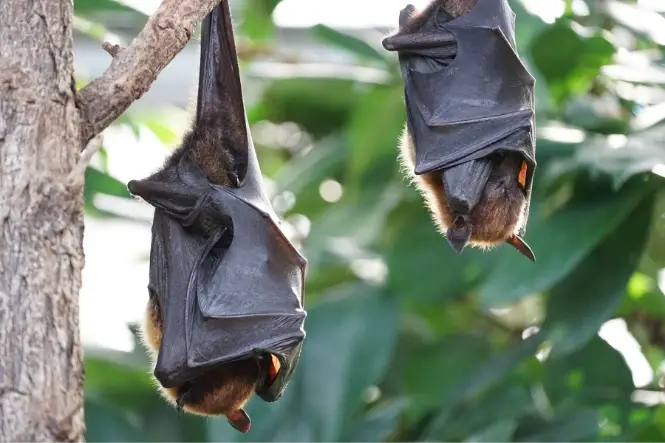With Count Dracula as a role model, it’s hardly surprising that on the whole, bats are a fairly misunderstood group. While just about all of the myths and legends boil down to a whole load of misconceptions – if not outright lies – this unique and unusual bunch of creatures certainly doesn’t need all that spin to make a good story! They are quite intriguing enough in their own right, as even a quick look at a few lesser-known facts about these amazing animals makes very clear.
Bats in General
- There are around 1,000 species of bats in the world, which means they represents nearly a quarter of all the planet’s mammals!
- Three-quarters of the world’s bats are insect eaters.
- Nearly a quarter of the world’s bats are facing extinction.
- Bats have remained virtually unchanged for over 50 million years.
- The largest bats have wingspans of 6ft (1.8m) or more, while the smallest get around on wings little more than 6 inches (15cm) across.
- A baby bat is called a ‘pup’.
Bats in Britain
- There are 16 species of bat commonly found in Britain.
- With wingspans of 16 inches (40cm) or more, the Noctule and the Greater Horseshoe bats are Britain’s largest varieties.
- The Pipistrelle is Britain’s smallest bat; it is less than 2 inches (5cm) long, and weighs about as much as a two-pence piece. It is also the most common of the UK’s bat species.
- Bats have big babies; a baby Pipistrelle for instance, typically weighs a quarter as much as its mother, while other kinds can weigh up to a third. No wonder they only have one baby a year!
- Bats generally tend to mate in the autumn, but they delay actual fertilisation until the warmer days of spring, when their insect food is more abundant.
- Many bats live for 5 or 6 years, but Daubenton’s bat, once known as the Water Bat because of its habit of skimming the surface in flight, can live to be 30 years old.
A Bit of Bat Biology
- The bats invented sonar long before submarines had it. The world’s large fruit bats don’t use it, but the 800 or so species of so-called micro-bats certainly do. They emit bursts of high frequency ultra-sound beyond the range of most adult human hearing and use the echoes to build up a detailed picture of their surroundings. It’s effective enough for them to catch tiny insects in total darkness. It also explains why many kinds have such magnificent ears!
- Bats are the only kind of mammal to have evolved powered flight.
- Bat babies are well-developed when they are born, quite unlike the hairless and helpless young of other small mammals, such as rodents. They really aren’t ‘flying mice’.
- As well as hibernating to get through the winter, bats are equipped to deal with occasional cold snaps by going into torpor – a form of very short-term shut down – to save energy by slowing their metabolic rate down to around 40 times lower than normal. It takes about two hours to achieve this state, and about an hour to ‘wake up again’ – which is usually accompanied by a lot of shivering and twitching.
Myths and Legends
We love this section from Villains Rum about the myths and legends of Bats!
Bats don’t really ask for a lot in life, just a safe place to roost and rear their babies, a good supply of pesticide-free insects, and a cool, humid place to hibernate through the winter. It’s a pretty small price to pay for the chance to see nature’s 50-million year old experiment in mammalian flight, flitting around your own garden.
Time to put up those bat boxes!

